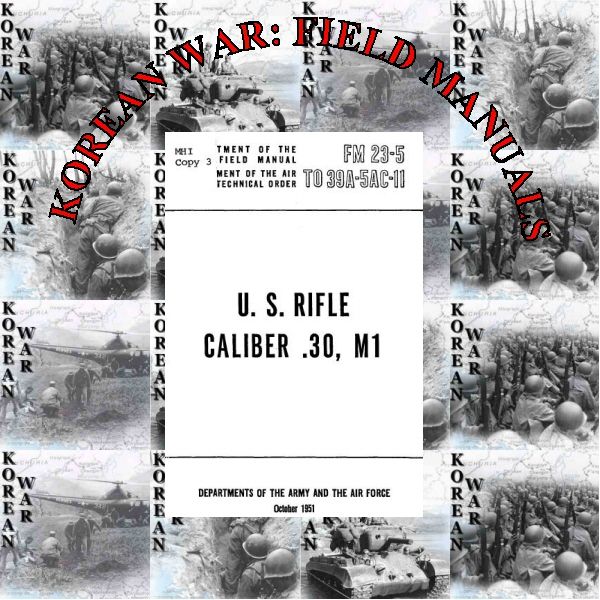
Description
Korean War Field Manuals and Doctrine
- September 12, 1949: FM 100-10 (Field Service Regulations, Administration) is published.
- August 7, 1950: FM 30-102 (Handbook on Aggressor Military Forces) is published.
- June 3, 1950: FM 22-5 (Drill and Ceremonies) is published.
- March 21, 1951: FM 30-102 (Handbook on Aggressor Military Forces) is published (a revised version).
- October 2, 1951: FM 23-5 (U.S. Rifle Caliber .30, M1) is published.
- 1951: MCM-1951 (Manual for Courts-Martial, United States, 1951) is published.
- June 30, 1953: FM 22-5 (Drill and Ceremonies) is published (a revised version).
- October 21, 1954: FM 100-10 (Field Service Regulations, Administration) is published (a revised version).
- September 23, 1955: FM 30-102 (Handbook on Aggressor Military Forces) is published (a further revised version).
- August 26, 1955: FM 30-16 (Technical Intelligence) is published.
- September 1, 1958: FM 23-5 (U.S. Rifle Caliber .30, M1) is published (a revised version, notably after the official end of the Korean War).
- February 2004: Some material within this compilation, dating from 1949 to 1955, was officially declassified.
Inside the Korean War – Field & Technical Manuals
Korean War manuals, which include field manuals, technical manuals, and other doctrine guides.
These consist of 28,207 pages of field manuals from the Korean War.
The manuals were produced between 1949 and 1955.
Certain parts of the content were not formally released from classification until February 2004.
Key examples from the 125 manuals are as follows:
FM 23-5: U.S. Rifle, Caliber .30, M1
This field manual explains that its aim is to instruct you on correctly firing your rifle and maintaining it, whether in the field or at a military base.
By learning the content in this manual, you can improve your skills to become an effective rifleman and a stronger contributor to your unit—the rifle squad.
The rifle serves as the primary weapon for the United States Army.
While you might use it for target practice like shooting at a bull’s eye now, it could be aimed at an enemy later.
Because of this, no aspect of shooting can be considered just adequate.
During battle, you will either succeed in hitting your target or fail completely, and your proficiency as a rifleman could determine your survival as well as that of your fellow unit members.
FM 23-35: Pistols and Revolvers
This manual addresses the Automatic Pistol, caliber .45 M1911, the Automatic Pistol, caliber .45 M1911, the Colt revolver, caliber .38 with a 2-inch barrel (Detective Special), the Smith and Wesson revolver, caliber .45 M1917, and the Colt revolver, caliber .45 M1917. It covers topics such as disassembling and assembling, maintenance and cleaning, how it operates, spare parts and accessories, types of ammunition, personal safety measures, issues like malfunctions and stoppages, mechanical training, preparatory exercises, qualification firing, and skills in marksmanship.
FM 30-5: Combat Intelligence
This manual outlines the roles of intelligence, the processes for gathering and analyzing information, and the creation and application of combat intelligence by divisions and smaller units in battle. It provides the fundamental military intelligence principles for these levels, serving as the main guide for intelligence staff in tactical units, and it formed the foundation for specialized branch intelligence manuals. The manual includes examples of forms that the intelligence officer uses to develop intelligence, along with templates and illustrations of intelligence estimates, reports, plans, and studies that the officer handles. Topics addressed include: tactical units, the creation of combat intelligence, gathering from sources and agencies, types of information sources, information-gathering organizations, analyzing information, applying intelligence, the role of G-2, distributing intelligence, guiding collection efforts, reconnaissance activities, ground reconnaissance, counterreconnaissance measures, air reconnaissance, utilizing sources effectively, enemy order of battle, counterintelligence operations, counterintelligence methods, communication intelligence and communication security, communication intelligence specifically, communication security, intelligence planning approaches, and preparing for special operations.
FM 72-20: Jungle Operations
This field manual discusses the challenges of conducting military operations in a jungle and describes ways to address them. It explains how military units can navigate a jungle most effectively, and it expands on standard tactical principles and methods when adapted to jungle environments. It provides solutions for supply issues and outlines the techniques needed for individual and group survival. Topics encompass: Impact of the jungle on military activities, Elements affecting jungle strategies, Troop movements and marches, Attacking in battle, Defending in battle, Withdrawal operations, and Useful tips for surviving in the jungle. FM 6-20 Artillery Tactics and Technique
This military manual serves as a reference for artillery officers, artillery commanders, their staff, and leaders of other combat branches at levels above battalion.
It primarily focuses on the tactical use of artillery within the combat area.
It addresses the structure, leadership, and tactical management of artillery units.
It includes a review of the methods used for identifying targets, planning artillery fire, and directing artillery attacks.
It features a broad overview of the principles, structure, and methods of coordinating fire support, with special attention to artillery-related elements.
It discusses the use of artillery in airborne, amphibious, and other specialized operations.
FM 6-140 The Field Artillery Battery
This military manual acts as a reference for unit commanders and section leaders regarding the tactics and methods for deploying field artillery observation battalions and their batteries.
The manual addresses the structure, roles of personnel, training, and tactical deployment of field artillery observation battalions and batteries.
It also addresses the methods involved in sound, flash, and radar ranging, as well as survey and meteorological operations.
FM 7-10 Rifle Company Infantry Regiment
This military manual serves as a reference for the tactical deployment of the rifle company and its components.
It covers the structure, weapons, individual roles, advancing to engage the enemy, offensive maneuvers, defensive maneuvers, retreat operations, activities under specific terrain conditions, supply management, evacuation, maintenance, and communication.
FM 10-63 Handling of Deceased Personnel in Theaters of Operations
This military manual offers technical support to personnel from the Army, Navy, Marine Corps, and Air Force involved in graves registration services in operational areas, and it provides guidance on searching for, recovering, and transporting deceased individuals, selecting and arranging temporary cemeteries, identifying and burying the dead, and preparing reports and records.
FM 19-5 Military Police
The goal of this military manual is to provide a fundamental reference for military police in carrying out their responsibilities.
This manual addresses the mission and structure of military police units, as well as the appearance, behavior, duties, authority, jurisdiction, and training of military police, and the approaches and methods they should use to perform their duties effectively and reliably.
FM 19-40 Handling Prisoners of War
The aim of this military manual is to act as an operational reference for military police and other officers and enlisted personnel in active operational areas when managing, processing, interning, and assigning labor tasks to enemy prisoners of war.
This military manual addresses key aspects of the 1949 Geneva Conventions related to the treatment of prisoners of war.
It covers the actions of capturing forces, gathering prisoners, questioning them, evacuating them, managing prisoners of war in division, corps, army, and communications zone areas, implementing disciplinary actions, utilizing prisoner-of-war labor, and the roles and functions of the military police prisoner-of-war processing company and the military police guard company. AM-5: This is the United States Marine Corps Amphibious Manual focused on the Regimental Combat Team.
The objective of this manual is to outline the practical elements involved in deploying a regimental combat team during an amphibious operation.
In this document, the manual covers the planning, embarkation, landing, and assault stages of an amphibious operation specifically at the Regimental Combat Team (RCT) level.
The guidelines for utilizing combat, combat support, and combat service support components in an amphibious operation are explained here only when they directly contribute to fulfilling the RCT’s objectives.
Other manuals in the series encompass:
- Dictionary of United States Military Terms for Joint Usage (First Revision)
- FM 5-5 ( Engineer Troop Units )
- FM 5-132 ( Engineer Combat Battalion Divisional )
- FM 5-134 ( The Armored Engineer Battalion )
- FM 6-40 Field Artillery Gunnery.
- FM 6-10 ( Field Artillery Communications )
- FM 6-20 ( Artillery Tactics and Technique )
- FM 6-55 ( 4.5-inch Multiple Rocket Launcher M21, Towed )
- FM 6-74 ( 105-mm Howitzer M2A1 on Motor Carriage M7B1 and M7B2 )
- FM 6-75 ( 105mm Howitzer M2 Series Towed )
- FM 6-140 ( The Field Artillery Battery )
- FM 7-10 ( Rifle Company Infantry Regiment )
- FM 7-17 ( The Armored Infantry Company and Battalion )
- FM 7-24 ( Communication in Infantry and Airborne Divisions )
- FM 7-25 ( Headquarters Company Infantry Regiment )
- FM 7-30 ( Service and Medical Companies Infantry Regiment )
- FM 7-40 ( Infantry Regiment )
- FM 8-10 ( Medical Service Theater of Operations )
- FM 9-10 ( Ordnance Maintenance and General Supply in the Field )
- FM 10-7 ( Quartermaster Organization and Operation in Divisions )
- FM 10-11 ( Quartermaster Pack Company )
- FM 10-12 ( Quartermaster Parts Company )
- FM 10-13 ( Quartermaster Reference Data )
- FM 10-14 ( Quartermaster Bakery Company Mobile )
- FM 10-15 (Quartermaster Quartermaster Sales Company, Mobile)
- FM 10-16 ( Quartermaster Laundry Company Semimobile )
- FM 10-17 ( Quartermaster Organization and Service in Army and Corps )
- FM 10-22 ( Quartermaster Clothing and General Supplies Depot Company (TO&E 10))
- FM 10-30 ( Quartermaster Subsistence Depot Company )FM 10-53 ( Headquarters and Headquarters Detachment Quartermaster Battalion )
- FM 10-63 ( Handling of Deceased Personnel in Theaters of Operations )
- FM 11-40 ( Signal Photography )
- FM 16-5 ( The Chaplain )
- FM 17-33 ( Tank Battalion )
- FM 17-34 ( Amphibious Tank and Tractor Battalions )
- FM 17-35 ( Reconnaissance Battalion Armored Division )
- FM 19-5 ( Military Police )
- FM 19-10 ( Military Police Operations )
- FM 19-15 ( Civil Disturbances )
- FM 19-25 ( Military Police Traffic Control )
- FM 19-40 ( Handling Prisoners of War )
- FM 19-90 ( The Provost Marshal )
- FM 20-100 ( Army Aviation )
- FM 21-5 ( Military Training )
- FM 21-10 ( Military Sanitation )
- FM 21-11 ( First Aid for Soldiers )
- FM 21-18 ( Foot Marches )
- FM 21-20 ( Physical Training )
- FM 21-22 ( Survival at Sea )
- FM 21-30 ( Military Symbols )
- FM 22-5 ( Drill and Ceremonies ) 6-3-1950
- FM 22-5 ( Drill and Ceremonies ) 6-30-1953
- FM 22-10 ( Leadership )
- FM 22-100 ( Command and Leadership for the Small Unit Leader )
- FM 23-5 ( U.S. Rifle Caliber .30, M1 ) 9-1-1958
- FM 23-5 ( U.S. Rifle Caliber .30, M1 ) 10-2-1951
- FM 23-35 ( Pistols and Revolvers )
- FM 25-10 ( Motor Transportation, Operation )
- FM 26-5 ( Interior Guard Duty )
- FM 30-5 ( Combat Intelligence )
- FM 30-16 Technical Intelligence26 August 1955
- FM 30-28 ( Armed Forces Censorship (Army) )
- FM 30-102 ( Handbook on Aggressor Military Forces ) 3-21-1951
- FM 30-102 ( Handbook on Aggressor Military Forces ) 8-7-1950
- FM 30-102 ( Handbook on Aggressor Military Forces ) 9-23-1955
- FM 31-8 ( Medical Service in Joint Overseas Operations )
- FM 33-5 Psychological Warfare Operations
- FM 41-15 ( Civil Affairs Military Government Units )
- FM 44-1 ( Antiaircraft Artillery Employment )
- FM 44-2 ( Antiaircraft Artillery Automatic Weapons )
- FM 45-25, OPNAV Instruction 5530.5, AFM 190-5 ( Field Press Censorship )
- FM 55-7 ( Transportation Service in the Continental United States )
- FM 55-26 ( Transportation Inland Waterways Service )
- FM 55-30 ( Motor Transportation Operations )
- FM 55-130 ( The Harbor Craft )
- FM 57-30 ( Airborne Operations )
- FM 60-5 ( Amphibious Operations Battalion in Assault Landings )
- FM 60-10 ( Amphibious Operations: Regiment in Assault Landings )
- FM 72-20 ( Jungle Operations )
- FM 100-5 ( Field Service Regulations Operations )
- FM 100-10 ( Field Service Regulations, Administration ) 10-21-1954
- FM 100-10 ( Field Service Regulations, Administration ) 9-12-1949
- FM 101-54 ( Department of the Army Program Management )
- TM 5-231 Mapping Functions of the Corps of Engineers
- TM 5-240 A Guide to the Compilation and Revision of Maps
- TM 5-1013 Grader, Road, Motorized, Diesel Driven, Tandem-Drive 12-Foot Moldboard Warco Model 4D-100
- TM 5-1067 (Roller,Road,Towed Type, Sheepsfoot, 2 and 3 Drums in Line, American Steel Works Models MT-144, MD-96, and MD-120)
- TM 5-1094 TO 19-40AAD-9 Scraper, Road, Towed Type, Cable Operated, 8 cu. yd.. Southwest Model S-90
- TM 5-4053 TO19-75AJ-103 Tractor Saw Power Unit Wheelbarrow Type, Two-Wheel PPneumatic Tires, Gasoline Driven
- TM 5-5031 Generator Set Electric, Portable Gasoline-Driven Skid-Mounted Liquid-Colled 5-KW, 120 Volts 2-Wire, Direct Current Hollingsworth Mode
- TM 5-5164 Engine Gasoline Waukesha Model 6-SRKR
- TM 5-5167 Engine, Gasoline, Hercules Models JXC and JXD
- TM 5-5193 Engine Heavy Duty Air Cooled Wisconsin Models VE4, VF4 Instruction Book and Parts List
- TM 5-5211 Engine, Diesel, Two-Cycle, General Motors Model 6-110 (623O0RA)
- TM 5-9207 TO 19-75AB-44 Trailer, Full, Lowbed, 60-ton, Dorsey Model MT-60W
- TM 5-9219 Pump, Centrifugal, for Petroleum Pipeline, Direct Connected Gasoline-Driven, Skid-Mounted, 4-Stage, Horizontally Split, 3-Inch, 250-Lb
- TM 8-226 Dental laboratory Technicians
- TM 8-227 – AFM 160-14 Methods for Medical Laboratory Technicians
- TM 8-230 Medical and Surgical Technician
- TM 8-233 AFM-160-18 Handbookfor Pharmacy Technicians
- TM 8-233 Construction Surveying
- TM 8-273 Professional Manual for Nursing Service
- TM 8-292 – AFM 160-16 Physical Reconditioning
- TM 9-722 ( Tank-Mounting Bulldozer M2 )
- TM 9-723 ( Tank-Mounting Bulldozer M3 )
- TM 9-729 ( Light Tank M24 )
- TM 9-850 ( Abrasive, Cleaning, Preserving, Sealing, Adhesive, and Related Materials Issued for Ordnance Materiel )
- TM 9-1580 TO 38-1-1 Ordnance Maintenance: Binoculars M3, M7, M8, M9, M13, M13A1, M15, M15A1, M16, M17 And M17A1 And BC Telescope M65 )
- TM 9-1730A ( Continental 6-Cylinder Engine Model AOS-895-3 )
- TM 11-664 to 15-1 -356 Theory and Use of Electronic Test Equipment
- TM 11-666 Antennas and Radio Propagation
- TM 11-5030A TO 16-35TS497-7 Signal Generator TS-497BURR
- TO & E 7-11 Infantry regiment
- TO & E 7-151952 Infantry Battalion
- TO & E7N Infantiv Division
- AM-5 United States Marine Corps Amphibious Manual – The Regimental Combat Team
- Landing Party Manual – United States Navy 1950
- LFM-18 Troop Life and Training Aboard Ship
- MCM-1951 Manual for Courts-Martial, United States, 1951
- ST 31-20-1 Operations Against Guerrilla Forces
- ST 33-10-1 Military Propaganda
- ST 33-15-1, Psychological Warfare Operations in Occupied and liberated Areas
- ST 33-20-1 Psychological Warfare Field Operations
- ST41-10-1 Military Government Operations
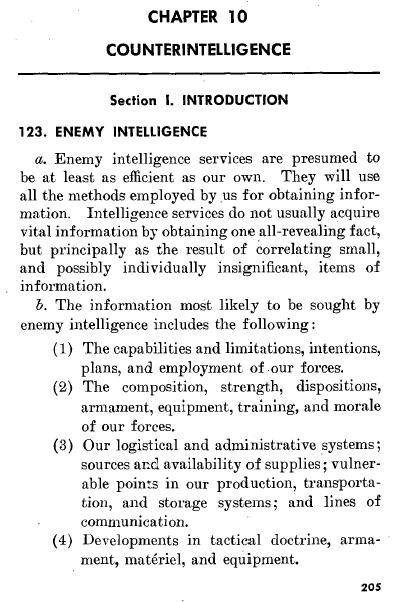
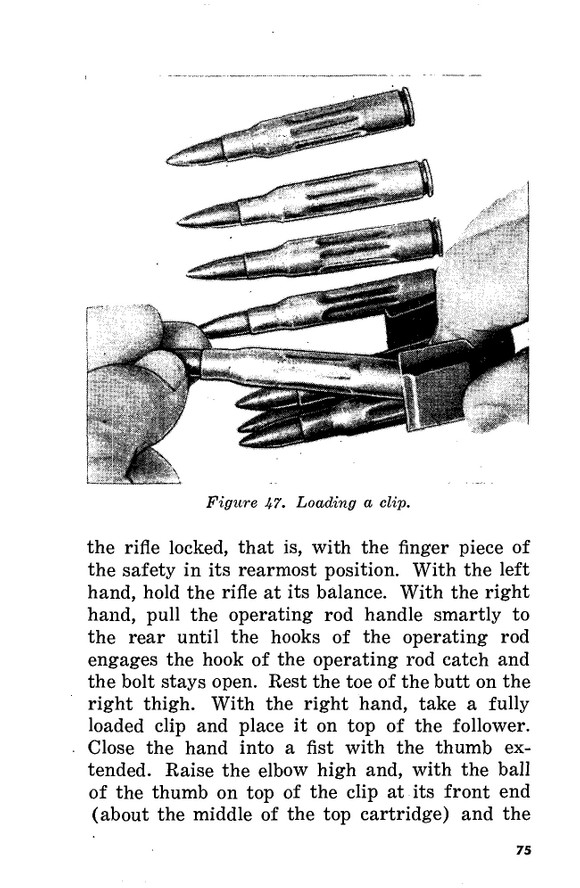
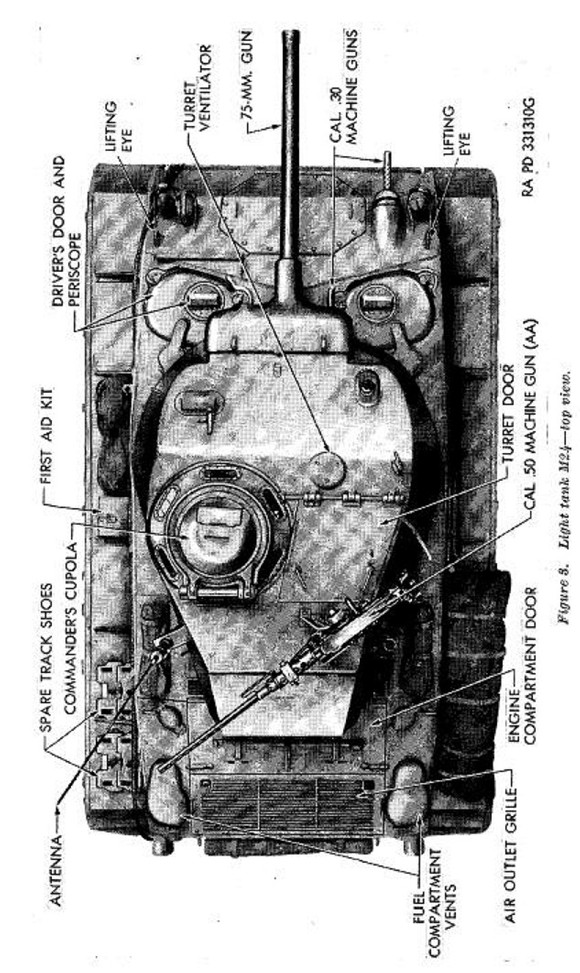
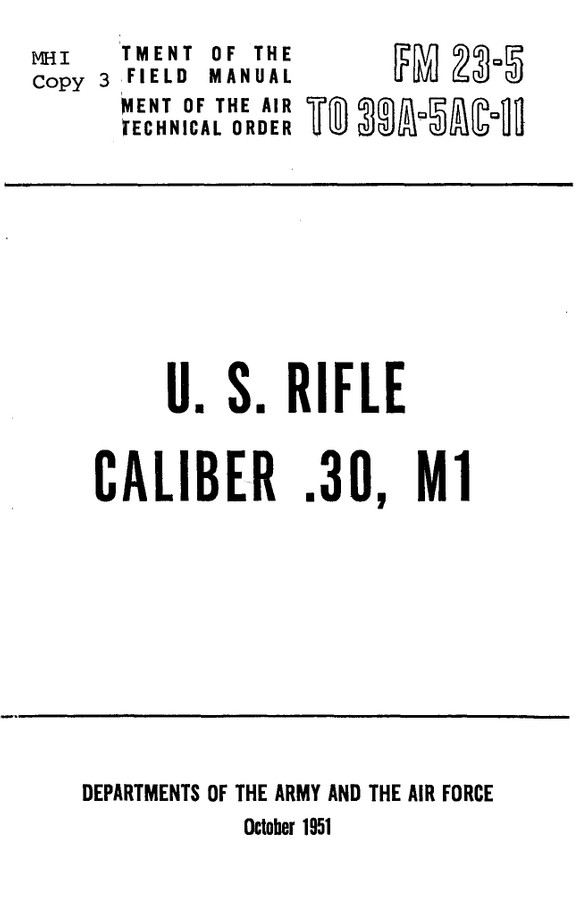

Related products
-
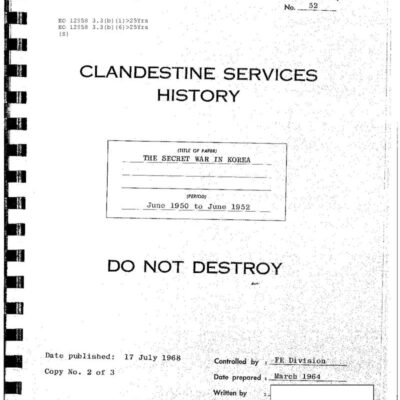
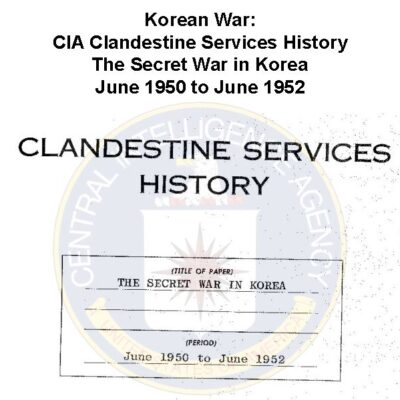
Korean War: CIA Covert Operations History – The Secret Conflict in Korea
$3.94 Add to Cart -
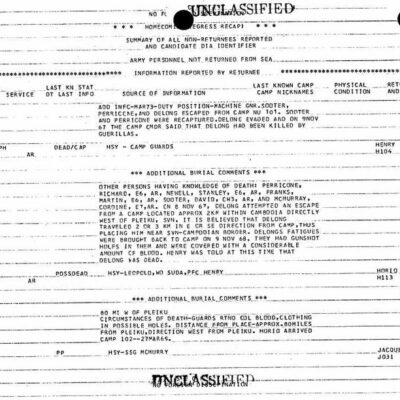
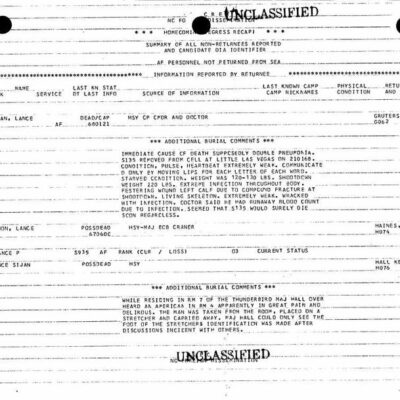
Vietnam War: POW/MIA Summary of All Reported Non-Returnees
$19.50 Add to Cart -
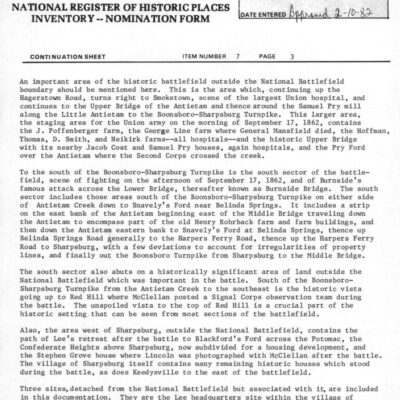

Civil War: Battle of Antietam (Sharpsburg) – National Park Service Archives
$9.99 Add to Cart -
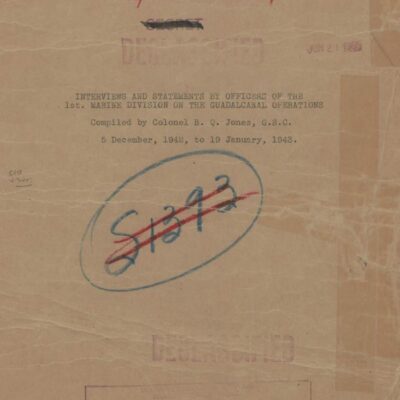
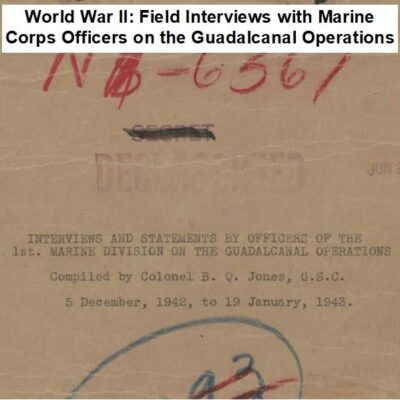
World War II: Marine Corps Officer Interviews on Guadalcanal Operations
$3.94 Add to Cart